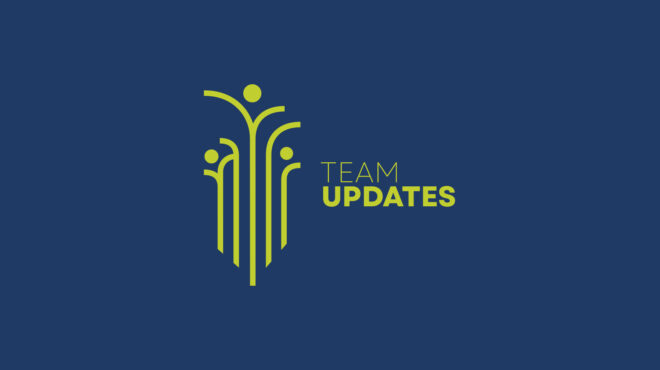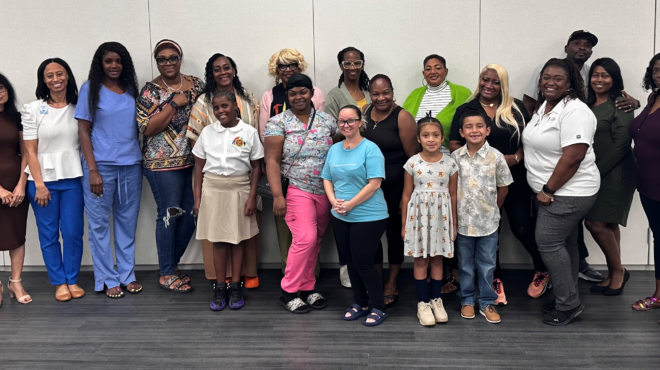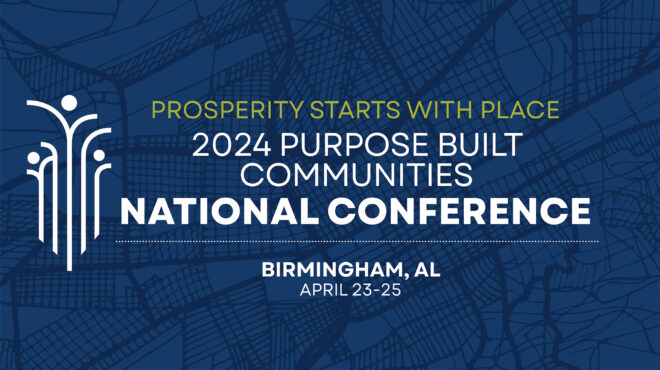By Guest Columnist
CAROL NAUGHTON,
Senior Vice President, Purpose Built Communities
Atlanta has indeed been a national leader in affordable housing innovations, as SaportaReport noted in the June 11 Maria’s Metro column. The invention, and more importantly, reinvention of public housing, are examples of the kind of innovation of which Atlanta is capable.
The Atlanta Housing Authority (AHA) remains a leader in affordable housing innovations that create better outcomes for people and neighborhoods. Having spent much of my career in community development, I know first-hand how revolutionary its approach to affordable housing has been.
AHA’s work over the past 18 years represents a new wave of the Civil Rights movement – reintegrating families into healthier neighborhoods and replacing despair with hope.
It’s important to acknowledge that AHA and its partners – the Integral Group, Columbia Residential and the East Lake Foundation and others – have demonstrated that they care about much more than simply providing affordable housing.
They have demonstrated their commitment to creating the circumstances that will provide better outcomes for families and neighborhoods.
I came to Purpose Built Communities, a nonprofit consulting firm that works with local leaders around the country to apply the model developed through the revitalization of East Lake to struggling neighborhoods around the country, via AHA and then the East Lake Foundation.
Based on the success of families and children in East Lake, we are convinced that a holistic approach which combines high-quality, mixed-income housing with a strong cradle-to-college education pipeline and community wellness programs and facilities–guided by a single-focus nonprofit organization–can help break the inter- generational cycle of poverty and significantly improve opportunities and outcomes for low-income residents, and strengthen the neighborhoods in which they live.
What the transformation of East Lake demonstrates is that the model works: employment rates increase, educational achievement and incomes rise, criminal activity decreases, and lives are radically improved by replacing despair with real opportunity.
There are additional benefits. We’ve known for some time that neighborhood is the most reliable predictor of a child’s academic and economic future, but it’s also a stunningly accurate predictor of health outcomes – an issue that is tied to our economic security as a nation and overall quality of life.
Some of the health-related progress we have observed in East Lake includes reduced obesity among children, decreased incidents of asthma, decreased absenteeism at school and increased recreational activity in the neighborhood.
The evidence is so compelling that seven other cities are now implementing this model, and 20 additional cities are exploring it.
This work of breaking the cycle of poverty through holistic community transformation is tied to the bigger issues of local and national economic growth at every stratum of American life.
Building on the pioneering work of AHA and its partners, and other Atlanta pioneers such as the Zeist Foundation and the Annie E. Casey Foundation, through the work of Purpose Built Communities, Atlanta continues to serve as a national model of the lives that can be changed and the benefits to society overall when we invest in both people and place to give everyone the opportunity to thrive.
National Journal names Purpose Built ‘innovator’
The political magazine National Journal included Purpose Built Communities in a list of “innovators making progress on 10 key challenges facing the country … 50 problem-solvers Washington can learn from.”
Purpose Built is grouped with “social entrepreneurs, who seek to ‘disrupt’ government by devising more efficient and effective ways of delivering social services, just as business entrepreneurs seek to disrupt existing markets with new products.”
The magazine stated:
Purpose Built Communities stands at the forefront of programs based on the belief that distressed neighborhoods need integrated responses that deal simultaneously with their many challenges. The Atlanta nonprofit partners with communities that embrace a holistic approach, based on three strategies: building high-quality mixed-income housing; creating quality cradle-to-college education options; and generating services and facilities that assist low-income families and attract middle-income residents. The group honed its model in the East Lake neighborhood in Atlanta, which in the mid-1990s was a veritable war zone. Today, violent crime is down 95 percent, property values are up, and a charter elementary school is one of the highest performing in the city. Purpose Built Communities is now working to replicate those results in eight more cities.
Warning: Critical tax programs at risk
Tax credits can help create the kind of high-quality affordable housing that is part of the revitalization taking place at Columbia Parc at the Bayou District in New Orleans.
The danger: Low Income Housing Tax Credit (LIHTC) and its sister, the New Market Tax Credit (NMTC), could be deleted if Congress wipes out all “credits” when they revamp the tax code.
The risk: These programs have contributed to a healthier economy. They’re critical to holistic community revitalization to break the cycle of intergenerational poverty. If they’re eliminated, we would lose vital resources that incentivize investment in distressed communities. Plus the elimination of the “credits” would make it almost impossible for local communities to build the affordable housing they desperately need to create and spur economic growth.
In the spirit of “everyone has to hurt some,” working families might be hurt more than they can stand, and distressed neighborhoods will have fewer options for new investment if LIHTC and NMTC are eliminated.
The facts:
- An estimated 12 million renter/homeowner households pay more than 50% of their income for housing (HUD)
- In 2011, more than 50% (19.4 million) of rental households were rent-burdened, paying more than 30% of their income for housing. And 25% were paying over 50%!
- The LIHTC has created 95,000 new jobs and added $7.1 billion in income; generated roughly $2.8 billion in federal, state and local taxes (NCSHA 2009 Fact Book)
- Between 1987 and 2010 the LIHTC program has helped finance 36,364 projects and almost 2,235,000 housing units.
- More than 72 percent of all NMTC investments are made in communities with severe economic distress–communities with unemployment rates more than 1.5 times the national average, poverty rates of 30 percent or more, or median incomes at or below 60 percent of the area median.
- According to Treasury Department data, between 2003 and 2010, the NMTC generated over $20 billion in private investment in communities with high poverty rates, low incomes and high unemployment rates.
- Between 2003 and 2010, NMTC investments generated well over 500,000 jobs in hard-hit urban and rural areas, including about 200,000 permanent jobs and 335,000 construction jobs.
The imperative: These credits will only survive if Congress understands and believes how critical they are to their constituents. If you’re interested in saving these programs, please contact your Senators and Representatives.









